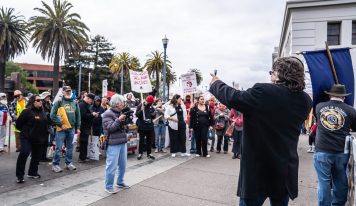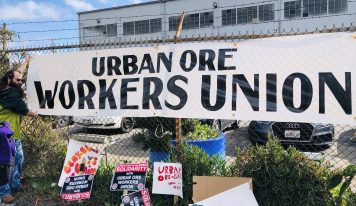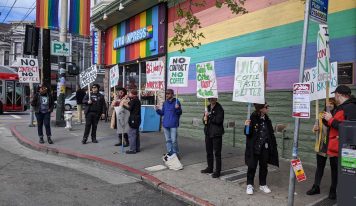The Bay Area has a reputation as an environmentally conscious region. However, this green consciousness does not manifest equitable conditions for all in the region. Alameda and Contra County have twice as many toxic release sites as the rest of the Bay Area counties combined.
The poorer and more black and Latino areas in the East Bay bear the brunt of the pollution that powers the region’s supposed green economy. The communities nearest the refineries have the highest asthma rates in California. Furthermore, Black and Indigenous people are more likely to have asthma than other groups, both across the US and in California.
The largest source of Particulate Matter Pollution (PM) in the Bay comes from the Refineries in Alameda and Contra Costa County. These refineries make up the Bay Area Refinery Corridor, the largest refining center in Western North America. Those counties have higher rates of children visiting emergency rooms for asthma than 80% of California. 36 Bay Bay Area K-12 schools, including 22 elementary schools are less than 3 miles from at least one refinery. Black and Indigenous people are more likely to have asthma than other groups, both across the US and in California.
The power and responsibility to regulate pollution from these refineries falls on the little-known regional government entity, the Bay Area Air Quality Management District (BAAQMD). The board’s structure and corporate lobbying from companies such as Chevron and Phillips 66 has led to massive delays in mandating effective regulations.
Unlike other air quality boards, there are no external appointees from the community of experts in environment or health. Instead, the BAAQMD consists of 24 elected officials from the 9 counties it must regulate. These officials often don’t have the capacity, time, or expertise to effectively serve on the board. San Francisco is a joint city and county, so supervisors serve as only representatives, while other cities have local representatives, giving their county supervisor more time to serve. Newly-elected Supervisor Melgar was the only San Francisco Supervisor with capacity to serve on the board. Supervisor Walton also serves on the board and serves as president of the San Francisco Board. Because these politicians have full-time jobs which only represent cities or counties, not the entire region, critical regulation gets delayed and fossil fuel lobbyists can influence the board’s agenda delaying and denying life-saving regulation.
After years of delays, the board is expected to vote on whether to mandate Wet Gas Scrubbers, a technology that can reduce the PM pollution from refineries. However, on Wednesday, March 10th, two days before the committee hearing to send the rules to the board, the administration of the board proposed a less stringent rule that would delay regulation and keep PM twice as high as EPA standards. After intense public pressure from health experts and the affected community, such as Dr. Tom Richards, wrote: “I can attest to the negative effects of poor air quality on the living people around refineries. The people living around the refinery in Richmond suffer increased rates of lung disease (asthma, COPD, lung cancer) as well as increased rates of other cancers and heart disease compared to other citizens of Contra Costa County,” the committee recommended to proceed with a Board-wide vote.
This new rule covers pollution from 3 refineries in the bay area: The Chevron refinery in Richmond, the PBF Energy Refinery, and Marathon Refinery, both in Martinez. All 3 companies are traded publicly and provide more than 4% dividends on their stocks, which are cash payments of over $2 billion annually. So while these companies have plenty of capital on hand to modernize their plants to reduce their ecological impact, they are instead passing their profits on to their investors and putting the costs of health and pollution damages on the people of the Bay Area.
The refineries so far have opposed any regulation, seeking to externalize the cost of pollution and maximize return for their investors. Unions fear job loss and neither the state nor the federal government have offered ways for workers to transition out of the sector. Many union workers, thanks to threats from their employers and propaganda from places like the Chevron-funded news site Richmond Standard, believe any regulation will reduce their income.
While oil and gas companies have spent millions on propaganda campaigns to convince union workers and city officials that installing sustainability measures kills jobs, the data show the opposite. For instance, Wet Gas Scrubbers is a capital expense that requires union labor to install. The Valero Refinery in Solano County, which installed Wet Gas Scrubbers, continues to operate profitably and has the lowest pollution level out of any refinery within the BAAQMD. Also, wet scrubbers eliminate the possibility of potentially catastrophic Electrostatic Precipitator (ESP) explosions, such as the one that occurred in 2015 at the ExxonMobile refinery in Torrance.
Despite the Board’s under-the-radar status and the pressure from the fossil fuel sector, the public who will face the massive health effects of continued pollution can still reach out to their Board members and submit a comment on the rules by April 31st.
Photo Credit: “Refine, Plate 2” by Thomas Hawk is licensed under CC BY-NC 2.0





